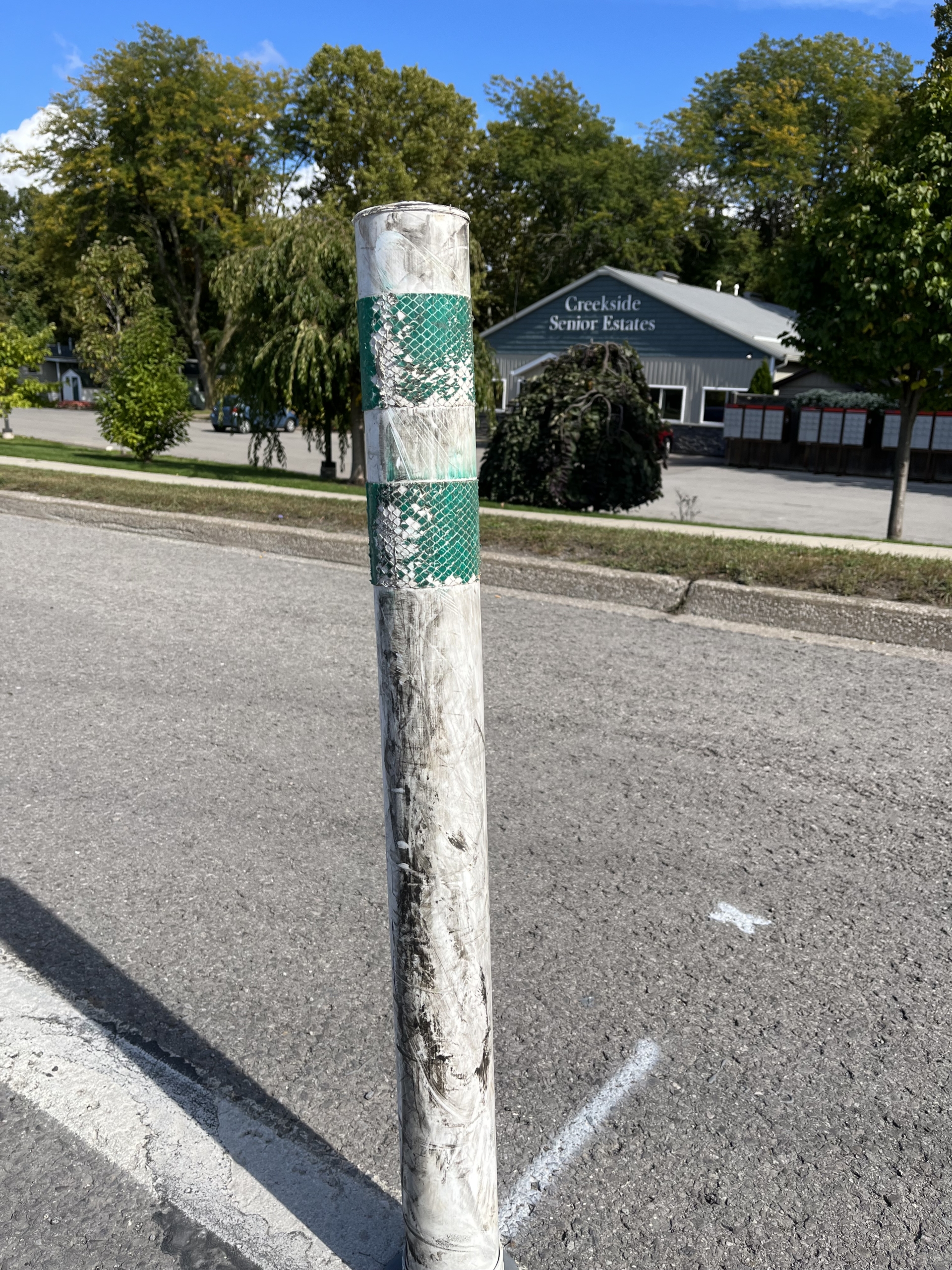Dear editor:
On Sept. 11, just three days after installation of the new bike lane bollards on Four Mile Creek Road in St. Davids, I did a count of detectable “hits” on the plastic barriers.
I counted 25 hits on separate bollards and many had been struck multiple times.
The first bollard on the northbound side was already tilted off centre by five to 10 degrees from multiple strikes and two weeks later it is now more like 15 to 20 degrees off centre.
Based on the current evidence it has clearly been hit hard many times.
The volume of large trucks/trailers travelling this road is high, meaning a collision due to lane restrictions for opposing traffic now seems inevitable.
School buses have been observed randomly stopping just to allow opposing traffic to pass safely. This road is just too narrow to sacrifice shoulder width for an unsafe bike lane.
On Sept. 26 I measured the width of the bike lane to see how it stacks up against the published regional bike lane (desired) standard of about five to six feet (1.5 to 1.8 metres). The results: This paved bike lane is not even close to being near the standards.
On the northbound side, beyond the 10 to 11 foot (3 to 3.3m) wide segment in front of Creekside Senior Estates the bike lane rapidly narrows to an average of 3.5 to 4.5 feet (1.1 to 1.3m). And it gets worse: one spot is just under three feet (0.9m) wide.
On the southbound side there are similar, although slightly less dramatic variances. The north end generally ranges between 3.75 to 4.5 feet (1.1 to 1.3m).
There is a slight bump-out near Petrullo’s Market to 10.5 feet (3.2m) and then it quickly narrows back to roughly four feet (1.2m) for the duration to the south end at Creekside Senior Estates.
Excluding the two wide sections, which are not representative, the average width of the bike lane is far below the expected standard.
As an avid cyclist, I appreciate the sentiment of improving conditions for bike safety.
This is especially concerning in light of the tragedy this week in Niagara Falls, in which NOTL resident Keith Simmonds, general manager of Great Wolf Lodge, killed while cycling on the Niagara Parkway.
However, within the new bike lane I feel less safe than ever.
Now a rider is faced with having to slalom along a crumbling asphalt shoulder that drops as much as seven inches into potholes while also avoiding gravel piles and now having significantly less room to manoeuvre.
On a mountain bike with wide knobby tires you have a chance. On a road bike with skinny tires you constantly risk being dumped in the blink of an eye.
Very little of the roadway from Mountain Road to York Road, in its current configuration, will even allow for a true bike lane. Very little of this trial bike lane is even remotely close to the regional standards.
What is the point of a mere 500-metre unsafe section of bike lane? Perhaps the main purpose of the trial is not bike safety, but speed control, which has been an ongoing battle on this section of the road for several years.
Maybe this is a “political offering” – convenient during an election.
Hopefully, following removal of the bollards in the late fall, like most political promises, this trial bike lane will disappear into the abyss never to again raise its ugly head (and I do mean ugly).
A few well-placed speed bumps would be safer, cheaper, more effective and far better looking.
Anyone wishing to provide feedback on the bollards is encouraged to view the Region of Niagara’s website under Bicycle Bollards Pilot Project- Niagara Region, Ontario.
Dow Wright
St. Davids










